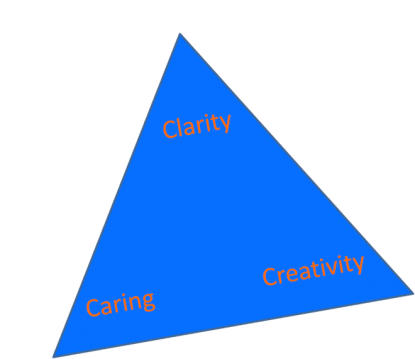Do you want to be able to think more clearly and make better decisions for yourself and your family? Research indicates that taking a more compassionate and creative approach to life will help you do just that.
The frontal lobe is most well known for its role in cognitive function and good decision making. It is the part of the brain just behind the forehead and eyes and is responsible for many things including our relationship to caring, compassion and creativity.
The frontal lobe (thinking) and limbic system (survival) interact to keep us safe but when we are afraid or fighting for survival, we don’t always think clearly and rationally about the best approach to take.
“How, then, can we relax vigilant, self-preservation systems so that our compassionate biology can more readily get into gear? University of Wisconsin researcher Helen Weng suggests the secret lies in the brain’s frontal lobes, which her studies show do a better job of calming alert signals from the amygdala (the brain’s almond shaped threat detector) [part of the limbic system] when people complete a brief course in compassion.” (Read full article here).

What this means is that when we enthusiastically pursue activities that mobilize our compassionate selves, our frontal lobes functions better. So if you want to think more clearly, be more caring and compassionate.
- Buy a puppy knowing that you are taking on the responsibility for another life. I am thinking about this because our family just got a cute Australian Sheppard puppy. It is adorable but needs a lot of attention and care.
- Volunteer at a senior’s center.
- Teach a child to swim.
- Share your wisdom, time, or resources.
- Care for a child or someone who needs help.
“Neuroscience tells us that without consistent early nurturance and loving care, the frontal lobes of the brain will not develop fully, disrupting emotional development. The prefrontal cortex (the part of the brain above the eyes) is the last part of the brain to develop in a child, which happens around four to five years of age. The capacities for empathy, reasoning, impulse control are housed in this section of the brain. Children who have been abused or neglected (even benignly neglected) will often struggle to feel empathy or compassion for others,” explained Lysa Parker, MS, CFLE, CEIM in “Be the Change: Nurturing the Capacity for Compassion.”

Artwork that harnesses creative impulses can stimulate both our ability to think clearly and to be more caring. Think of all the ways you can be creative. How is creativity expressed in your life? How is compassion and caring expressed? How do you use your ability to think clearly and make great choices?
You can think of the Frontal lobe function as a triangle: Caring, Creativity, and Clear thinking. Exercising one side of the triangle increases the other two sides as well. Which one will you start expanding today?









